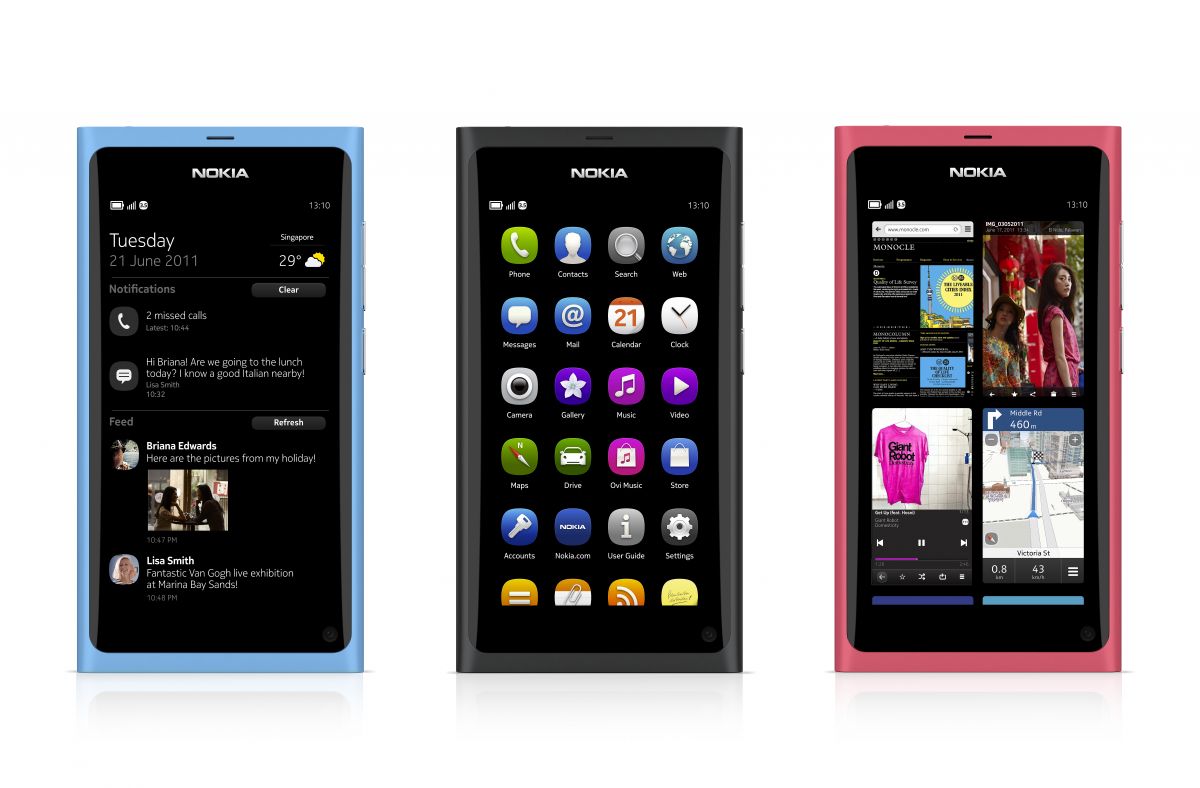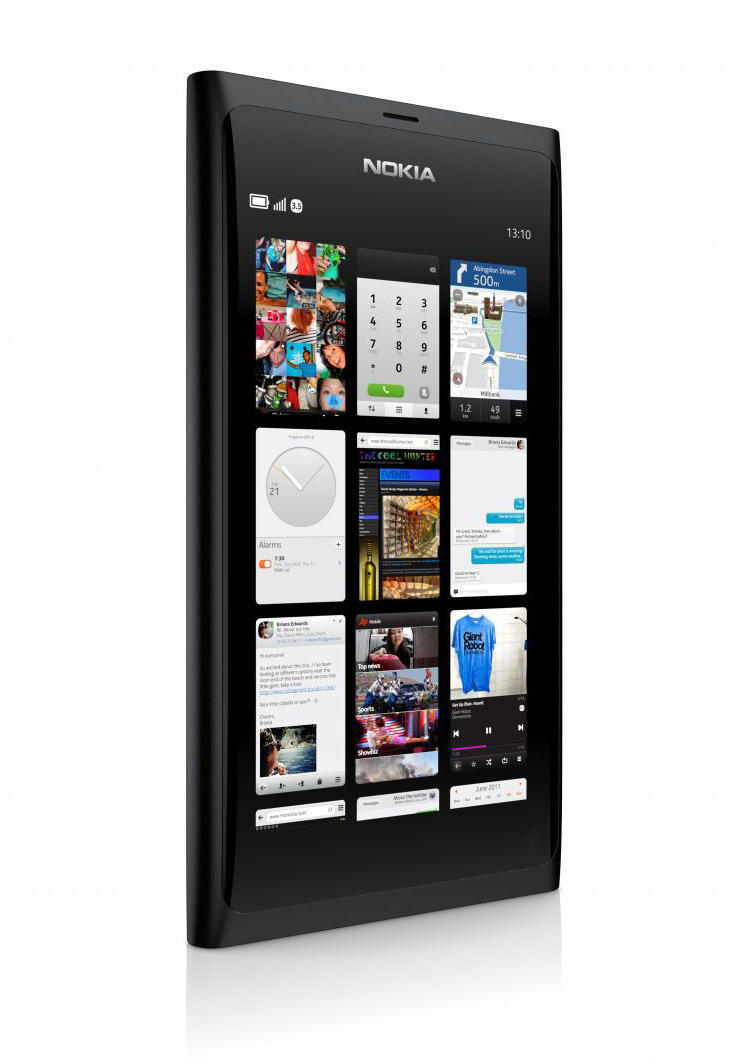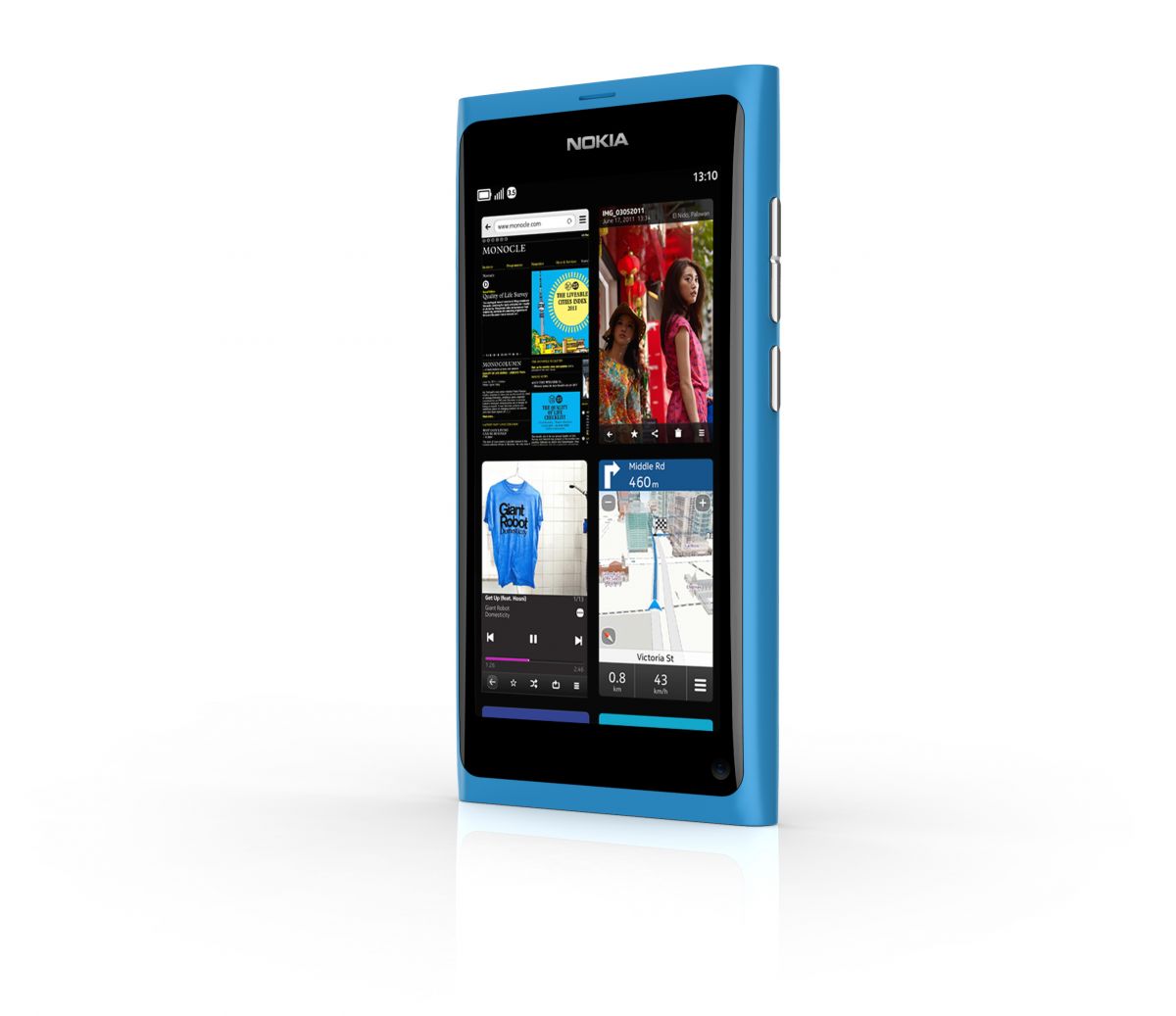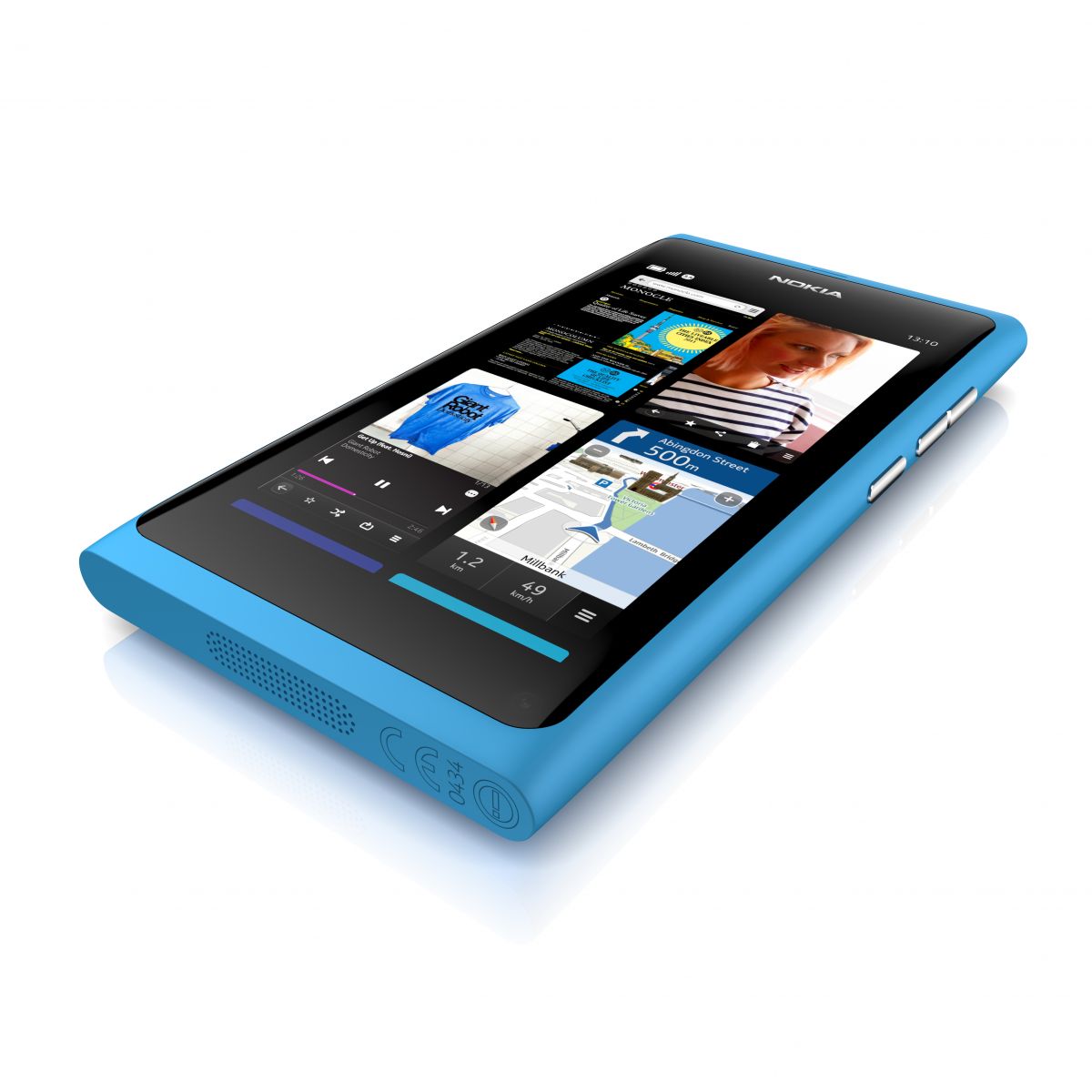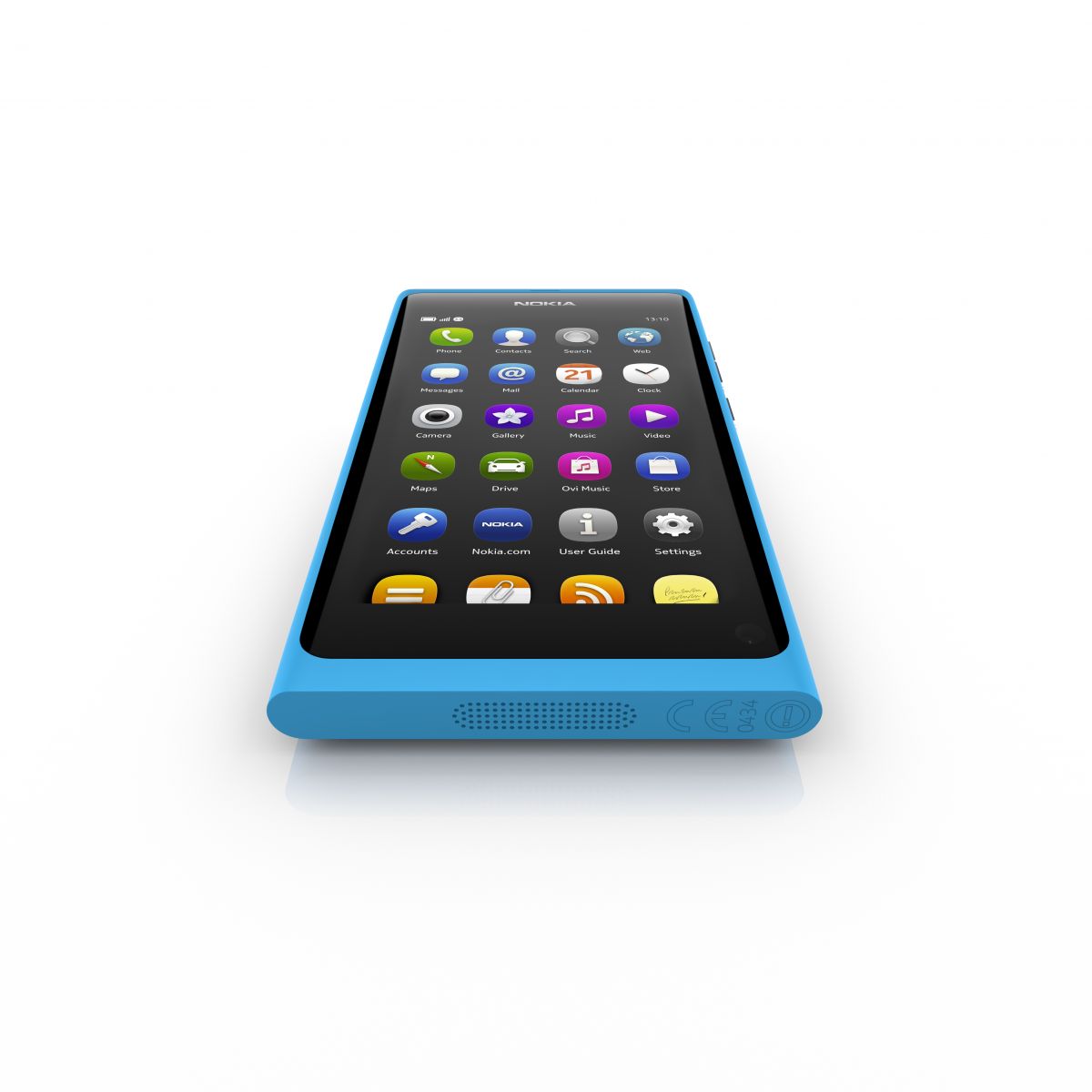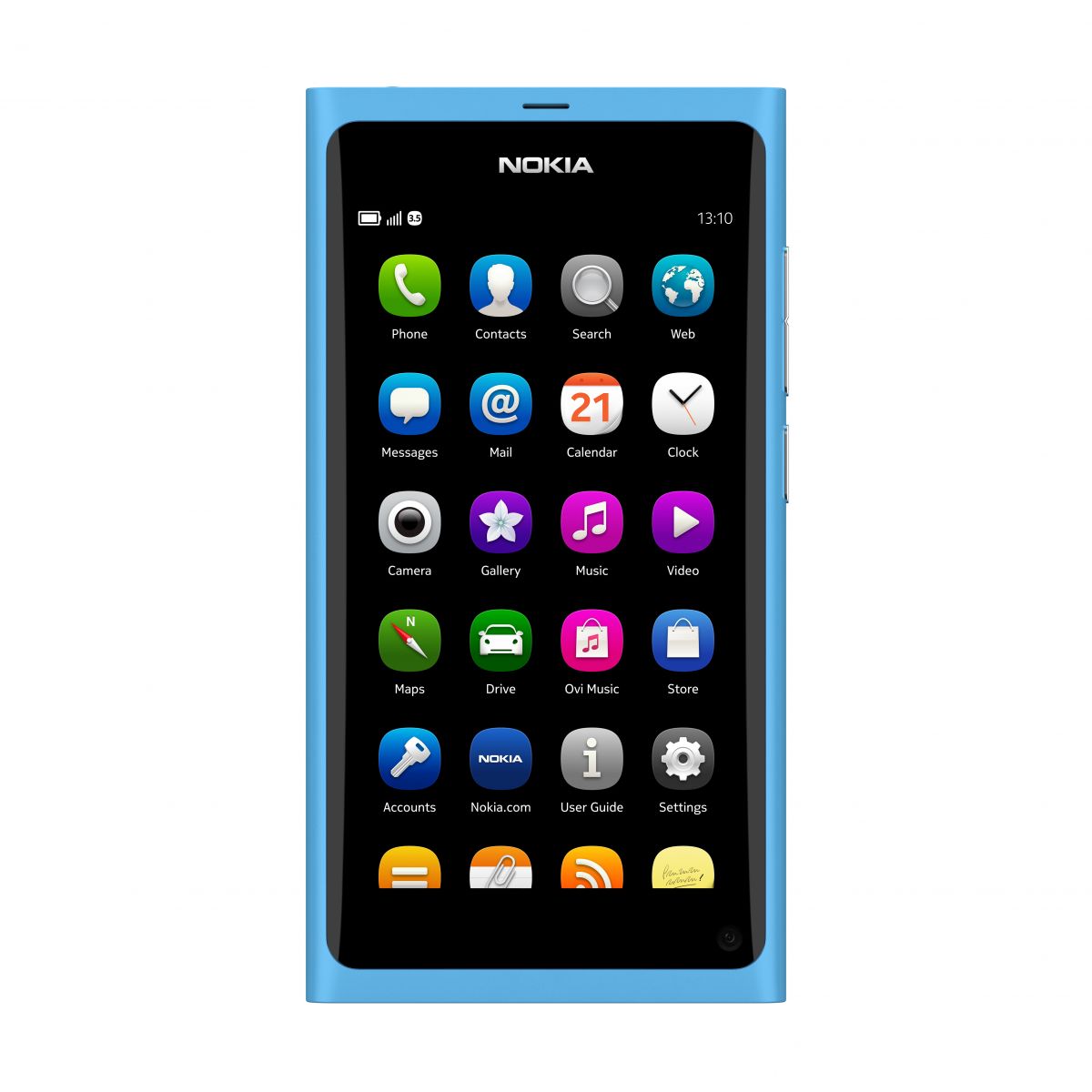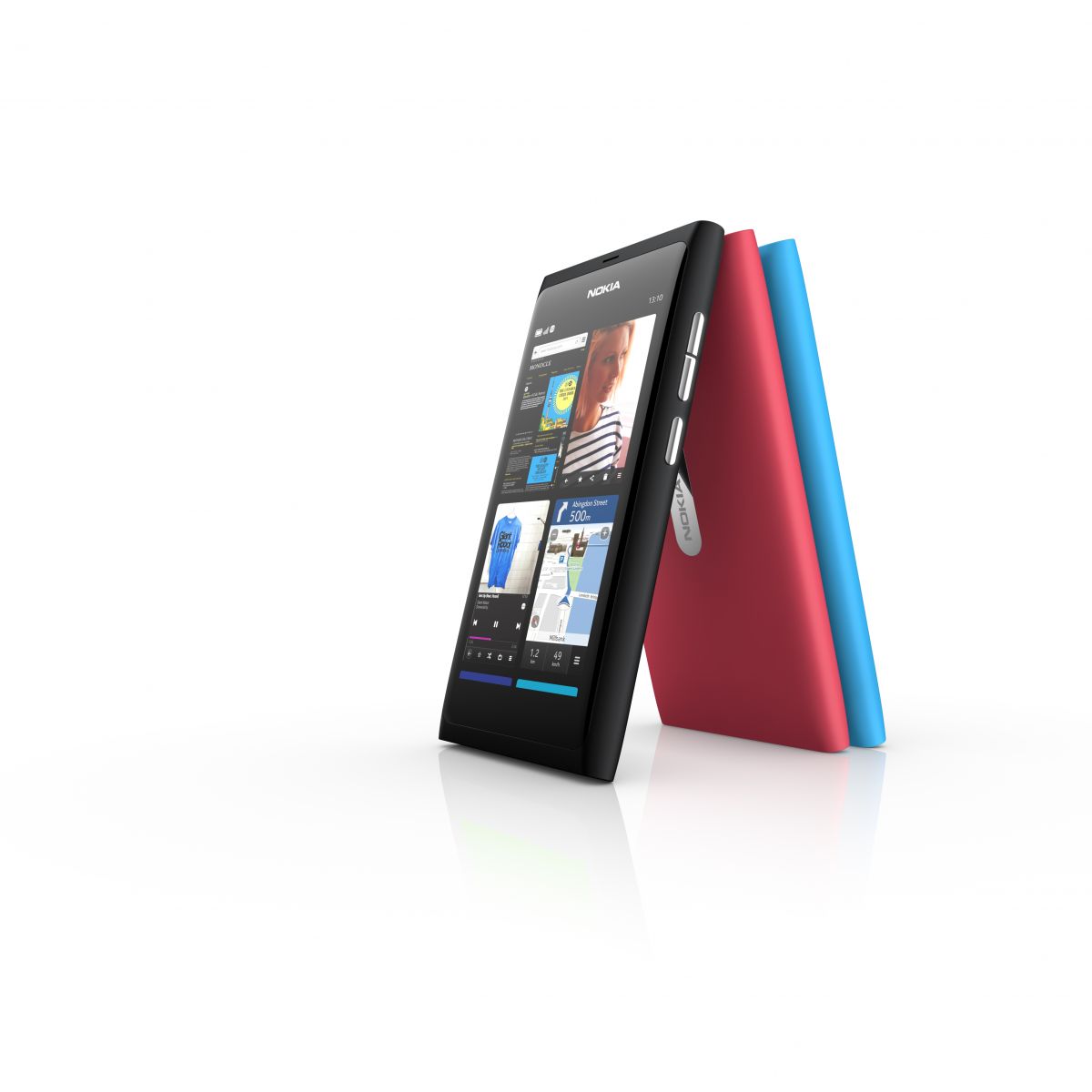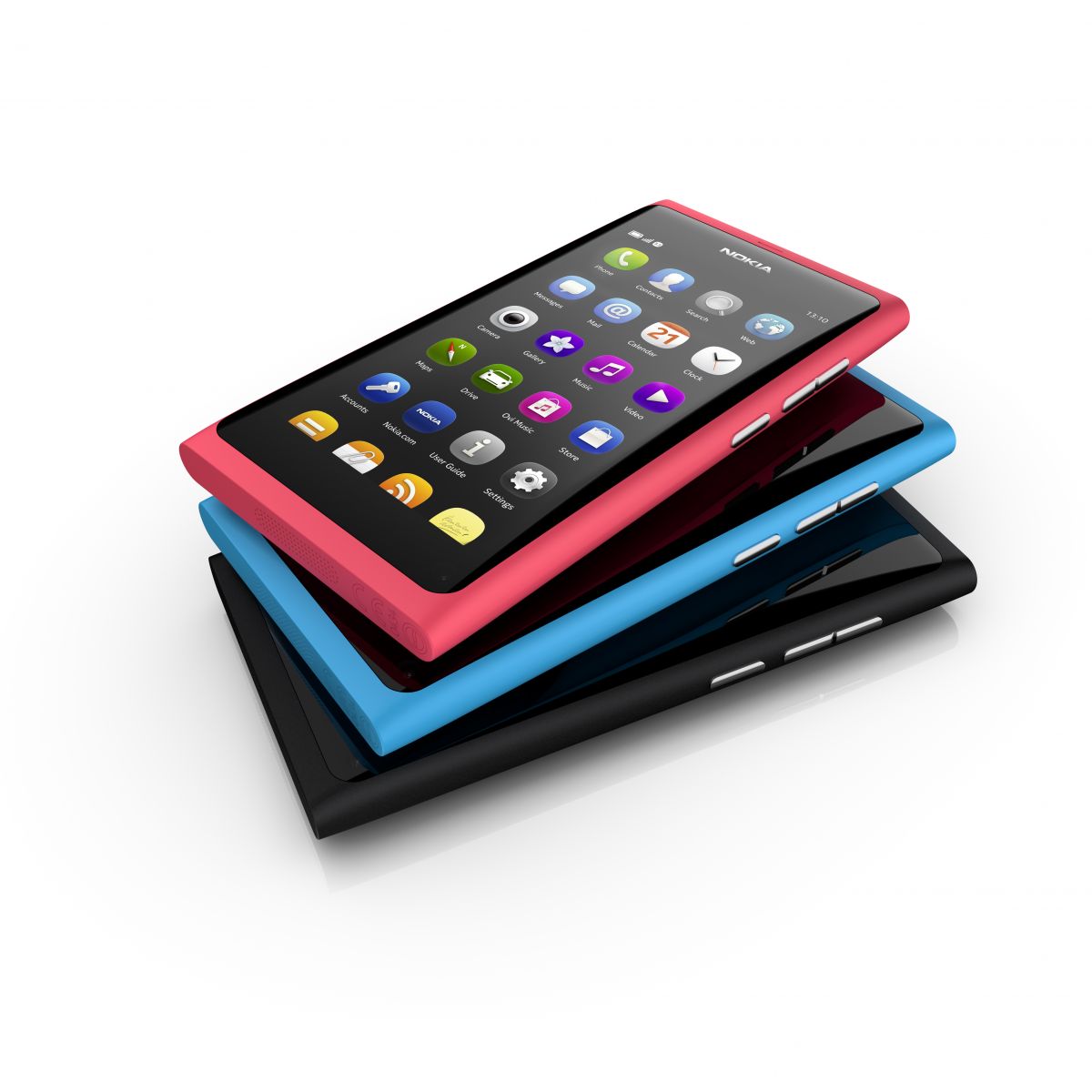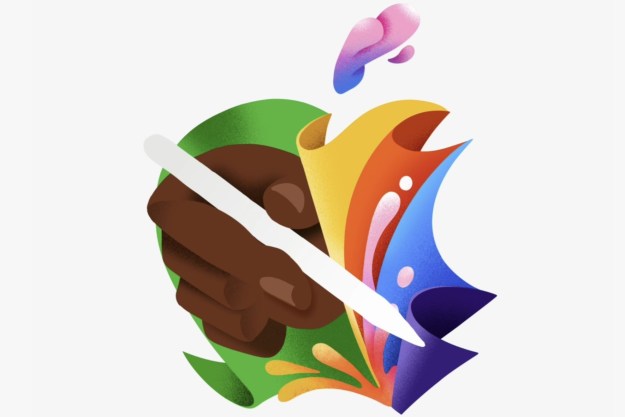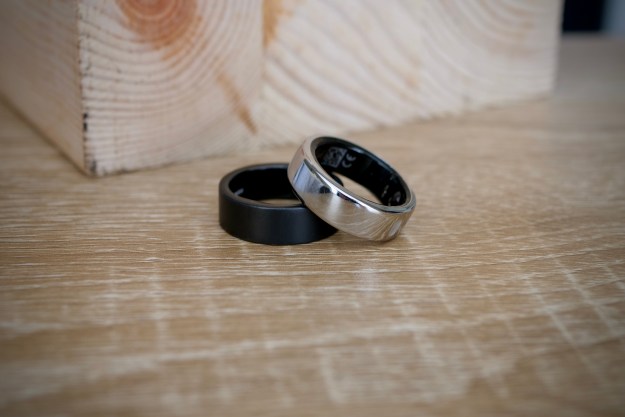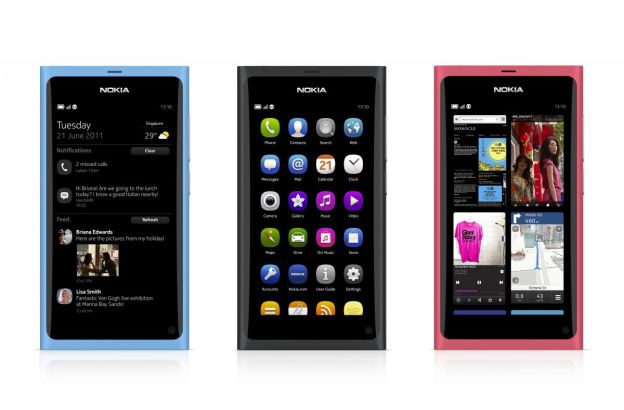
Nokia today unveiled its new N9 handset at the Nokia Connection event in Singapore. The stunning device runs on the Nokia-made MeeGo operating system. But with the Finland-based phone-maker set to move entirely to the Windows Phone 7 OS later this year, the N9 will be both the first and a last MeeGo-based device from Nokia. Fortunately, the sleek and nimble N9 lets MeeGo come in and out with a bang.
The N9 boasts unibody design, meaning the case is all one piece, and is made “from the best in polycarbonate material engineering today,” says Nokia. (Read: plastic) The N9 sports a 854×480 AMOLED display that measures 3.9 inches — slightly larger than Apple’s iPhone 4, but nearly half an inch smaller than some of the behemoth Android-based handsets we’ve seen arrive in the past year. Nokia offers the N9 in three colors: black, cyan and magenta.

Inside, a 1GHz TI OMAP 3630 processor powers the N9, and a PowerVR SGX530 graphics card gives it some moderate gaming guts. In other words, it’s not the most powerful phone out there — the GPU is used in the Droid X, Droid 2 and Pre 2, for instance — but it’s not underpowered either. A 1450 mAh battery gives about seven hours of talk time. The N9 also comes with either 16GB or 64GB storage capacities.
What it may lack in dual-core goodness, the N9 makes up for in other ‘superphone’ categories. Its 8 MP camera comes equipped with a wide-angle (28mm) Zeiss lens, which allows for HD video caputre. Nokia also claims that the N9’s camera is faster than any other on the market, “from launch to focus to capture.” (Unfortunately for Nokia, the N9 may lose that title when Apple releases iOS 5, which is supposed to greatly reduce iPhone camera load time.) The N9 also sports Dolby Headphone and Dolby Digital Plus support for some sweet surround sound enhancement. And the N9 comes NFC-enabled, making it possible to enjoy in the next-generation “digital wallet” payment systems that are slowly gaining momentum here in the US.
Release date and price of the N9 have not yet been announced.
